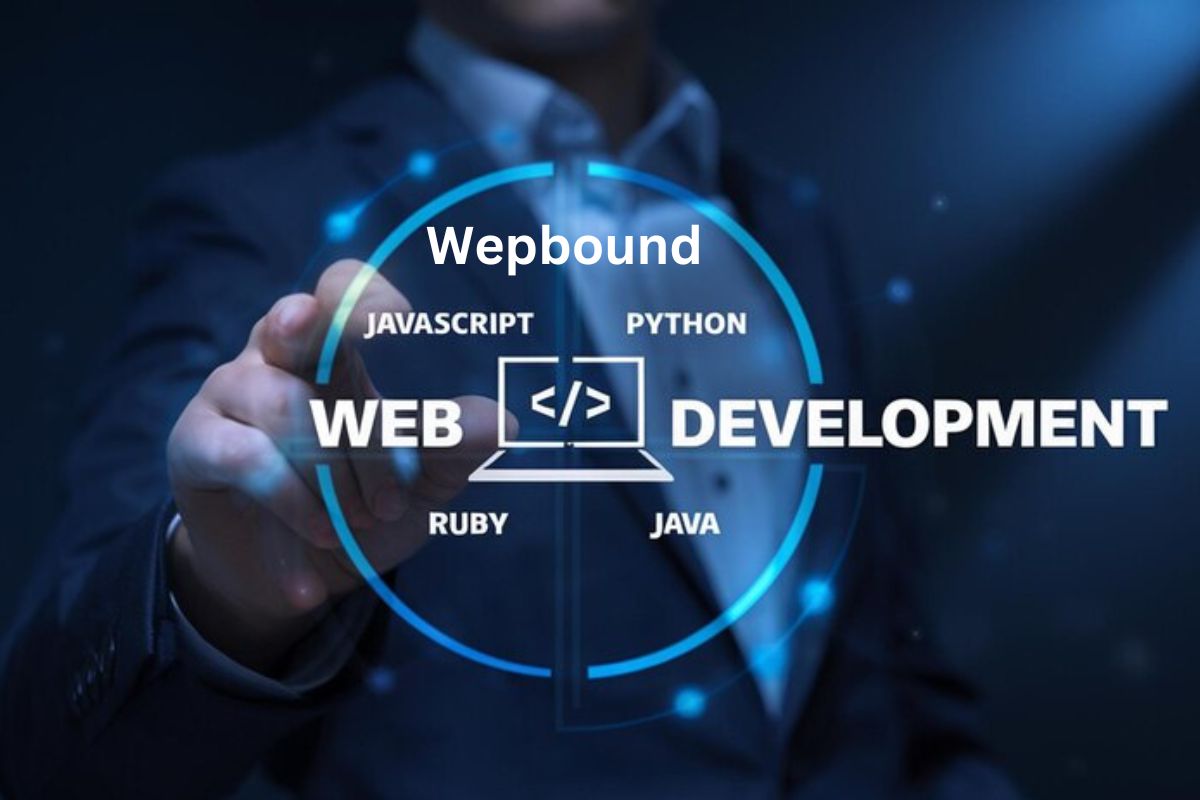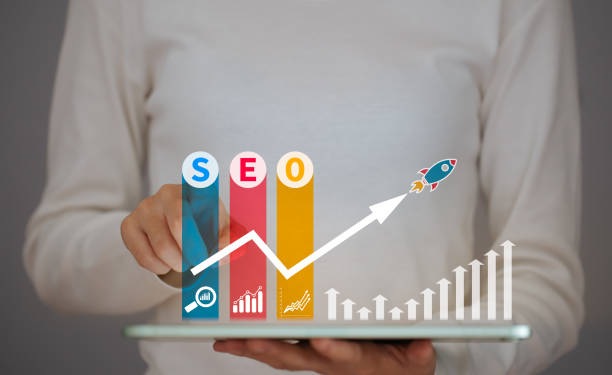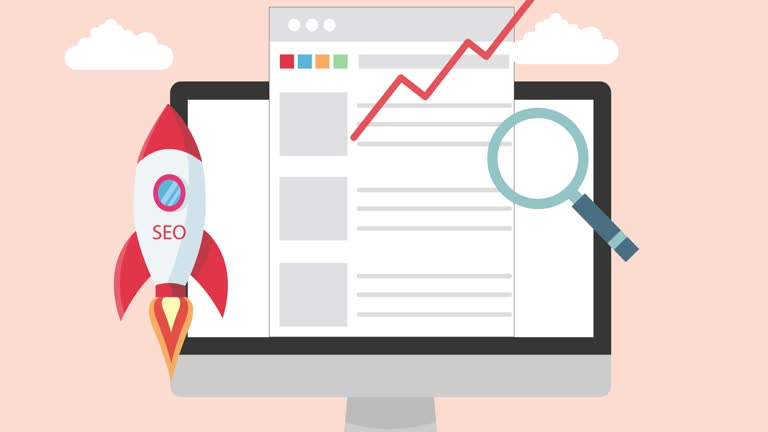Business
Marketing Strategies for Selling Otto Caps Wholesale

A business doesn’t end with finding the right products. You also have to market the products and present them before potential buyers. This is especially the case with saturated markets like caps. As such, if you’re looking for ways to sell your wholesale Otto caps, here are some essential key ideas to think of.
Targeting the Right Industries
Corporate clients represent a significant opportunity. Companies constantly seek branded merchandise. They need quality items for employee onboarding. it require gifts for client appreciation. They want consistent representation at events. Otto caps fulfill these requirements perfectly.
Retail businesses form another crucial segment. Boutiques seek quality headwear to complement their collections. Outdoor retailers need durable options for their customers. So, your wholesale offering solves their inventory challenges.
Sports organizations purchase headwear continuously. Teams need matching caps for players and coaches. Leagues require consistent branding across multiple teams and some commemorative apparel. Position your Otto caps as the solution to these ongoing needs.
Campus bookstores present steady demand. Universities refresh their merchandise regularly. Student organizations order custom caps for events. Alumni associations seek quality branded items. Direct your marketing to these educational institutions strategically.
Leveraging Digital Channels
Social media builds wholesale relationships effectively. Showcase your inventory through visual platforms. Demonstrate decoration capabilities with before-and-after content. Feature client success stories that highlight versatility. These approaches generate qualified inquiries from serious buyers.
Digital advertising reaches decision-makers efficiently—target purchasing managers through professional networks. Create campaigns focused on specific industries. Develop custom landing pages for different buyer segments. This precision reduces wasted marketing spend.
Email marketing nurtures wholesale relationships. Share new style announcements with existing clients. Distribute seasonal lookbooks showing decoration possibilities. Offer exclusive previews to your best customers. These touchpoints maintain your position as a trusted supplier.
Content marketing establishes your expertise. Create guides about headwear selection for specific industries. Develop case studies showing successful promotions using Otto Caps Wholesale. Publish decoration technique comparisons. This valuable information attracts serious buyers to your business.
Timing Your Marketing Efforts
Seasonal demands create predictable opportunities. Summer brings an increased need for sun protection. Fall introduces demand for new team headwear. Holiday seasons drive corporate gifting programs. Align your marketing pushes with these natural cycles.
Industry events generate concentrated interest. Trade shows put you face-to-face with qualified buyers. Industry conferences gather decision-makers in one location. Supplier showcases connect you with businesses seeking new products. Time your outreach to capitalize on these moments.
New product introductions create natural promotion opportunities. Otto’s style updates deserve an announcement. Color additions expand creative possibilities. Material innovations address specific needs. These developments provide organic reasons to contact potential clients.
Standing Out in a Competitive Market
Decoration expertise differentiates your business. Showcase your embroidery capabilities. Demonstrate innovative printing techniques. Highlight your ability to match brand colors precisely. These specialized skills attract clients with specific requirements.
Service excellence builds lasting relationships. Offer design assistance for custom orders. Provide quick turnaround for time-sensitive needs. Maintain consistent communication throughout the ordering process. These elements create loyalty beyond price considerations.
Key Takeaways
Industry specialization creates a competitive advantage. Develop deep knowledge of specific sector needs. Create packages tailored to particular industries. Speak the language of your target markets. This focused approach positions you as the obvious choice.
Business
Maximizing Efficiency with Durable Conveying Components

When it comes to industrial operations, efficiency is the name of the game. One weak link in a system can slow productivity, drive up costs, and disrupt workflows. That’s where durable conveying components step in to save the day. By investing in high-quality, long-lasting parts, businesses can minimize breakdowns, keep materials moving seamlessly, and ultimately, boost profitability.
This blog explores the importance of durable components in conveying systems, highlights key strategies for selecting the right parts, and discusses how technologies like the screw flight contribute to operational success.
Why Durability in Conveying Components Matters
Durability might not always be the first thing that comes to mind when evaluating conveying systems, but it’s undeniably essential. Here’s why it matters so much:
1. Minimized Downtime
Material handling systems represent the backbone of many industrial environments, from manufacturing to food processing. When a single component wears out prematurely, it can bring the entire system to a halt. High-durability components reduce the frequency of unexpected breakdowns, meaning operations stay on track.
2. Cost Savings
Investing in cheaper, lower-quality components may seem cost-effective in the short term, but they often require frequent replacements or repairs. Durable components offer a higher return on investment by lasting longer and reducing maintenance costs over time.
3. Consistent Performance
High-caliber components ensure consistent movement of materials, avoiding loss of efficiency due to misalignment, wear, or underperformance. This consistency eliminates the risk of bottlenecks, helping maintain smooth workflows.
4. Sustainability
Durable components have a lower environmental impact as they reduce the frequency of replacements and waste generation. Organizations aiming for sustainable manufacturing practices can benefit significantly from prioritizing longevity in their equipment.
Key Strategies for Maximizing Efficiency in Conveying Systems
Choosing durable components is only half the battle. Here’s how to make the most of your conveying systems with smart strategies and optimized parts.
1. Prioritize Trusted Manufacturers
Start by sourcing components from reputable manufacturers. Look for suppliers with a proven track record in your industry, offering high-grade materials and rigorous quality control. This ensures you’re building your system on a solid foundation.
2. Focus on Material Quality
Different conveying systems require components built with specific materials, depending on the type of material being handled (e.g., chemicals, granules, liquids). Stainless steel is an example of a material widely valued for its corrosion-resistant properties, which ensure components last longer in harsh environments.
3. Regular Maintenance Matters
Even the most durable components won’t perform to their potential without proper care. Regular maintenance schedules allow you to spot wear and tear early, preventing small issues from escalating into costly repairs.
4. Innovations in Design
Modern designs, such as the use of advanced screw flight configurations, can greatly improve material handling systems. A screw flight, which is a helically-shaped component used in screw conveyors, enhances material movement within enclosed spaces while reducing operational friction. Proper screw flight design ensures higher throughput, even under heavy workloads.
5. Customization for Your Needs
Every operation is unique, and conveying systems often perform best when tailored to meet specific requirements. Speak to suppliers about customized solutions that provide the right fit for your material handling needs, ensuring efficiency and durability hand in hand.
Actionable Tips for Adopting Durable Solutions
If you’re looking to integrate more durable components into your conveying system, consider these actionable steps:
- Consult an Expert: Engage with industry professionals or consultants who can help evaluate your current system and suggest durable upgrades.
- Upgrade Strategically: Start with the most critical components prone to wear and tear, then gradually improve the rest of the system.
- Focus on Training: Ensure staff members operating the conveying systems understand how to handle components properly to maximize their lifespan.
Proven Benefits of Durable Conveying Components in Real-World Applications
A global food processing firm recently adopted high-wear resistant materials for their screw conveyors, including durable screw flights. The results? Downtime caused by component failures was reduced by 30%, and annual maintenance costs dropped by 20%. Over time, they also managed to improve throughput by 15%, thanks to more consistent operation.
Such results clearly show the direct financial and operational benefits of investing in more durable conveying components, bolstered by innovative designs.
Build a Better System with Long-Lasting Components
Durability isn’t just a buzzword—it’s a crucial factor in ensuring that your conveying systems run smoothly, efficiently, and cost-effectively. From preventing unwanted downtime to improving overall productivity, durable components are the key to industrial success.
By implementing strategies like focusing on material quality, utilizing technologies such as customized screw flights, and prioritizing trusted suppliers, businesses can significantly enhance their operations. These steps ensure not just a better functioning system today but a competitive edge for years to come.
If you’re ready to elevate your material handling performance, start exploring durable, high-quality conveying components tailored to your needs.
Business
Captivating Displays That Boost Customer Engagement

Creating captivating retail displays is both an art and science that directly impacts customer engagement. Whether you’re in charge of a retail chain or managing a boutique outlet, effective display setups can substantially boost foot traffic, buying behavior, and brand loyalty.
This blog explores how strategically designed displays can engage your customers, the psychological tactics behind them, and practical ideas to transform your store into an experiential shopping space.
Why Retail Displays Matter
Before jumping into tactics, it’s essential to understand why retail displays are fundamental tools for success. Shoppers are naturally drawn to visually appealing setups that clearly communicate product value. According to research, 70% of customers’ purchasing decisions are made in-store. A striking display not only encourages these decisions but also enhances the overall shopping experience.
Retail displays also serve as crucial storytelling elements, allowing businesses to showcase a brand identity, highlight product features, or evoke emotions through clever visual merchandising.
Effective use of retail display solutions tailored to your target audience can make the difference between a customer walking past or browsing in-store.
The Psychology Behind Captivating Displays
To design displays that boost engagement, Captivating Displays important to consider how your audience processes visuals. Here are three core psychological principles that influence shopper behavior:
1. Color Psychology
Color directly affects emotions and buying decisions. For instance:
- Warm colors (reds, oranges, and yellows): These evoke energy, urgency, and excitement. They often work well for promotional or clearance sections.
- Cool colors (blues and greens): Create a sense of trust, calmness, and reliability. Use them in high-end or luxury displays.
Seasonal colors also tap into customers’ emotional connection with special occasions or holidays, creating an atmosphere that encourages spending.
2. Focal Points
Customers’ attention spans are short, and they may bypass your store entirely if your displays don’t immediately capture their gaze. A commanding focal point within your setup guides customer attention to featured products. For example:
- Use striking backdrops or props to make your hero product stand out.
- Leverage lighting to emphasize specific areas, like a new product launch.
3. “Rule of Three”
The “eye loves odd numbers” design principle suggests that grouping items in threes makes displays visually appealing and memorable. A cluster of three complementary products feels balanced and eye-catching. This principle is commonly applied to table displays and window merchandising.
Elements of High-Engagement Retail Displays
1. Interactive Displays
Give your customers hands-on opportunities to interact with products. For example:
- Set up touch screens that provide information about products or offer demos.
- Allow testers or samples to show customers how the item works or feels.
By fostering interaction, you create memorable experiences that increase the likelihood of conversion.
2. Seasonal Themes
Use seasonal themes to align your displays with special events, celebrations, or holidays. This creates relevance and urgency for customers. For instance:
- A winter-themed display showcasing cozy items like scarves or candles can evoke feelings of warmth and comfort.
- Valentine’s Day setups brimming with red decor and romantic quotes can boost sales for romantic gifts.
3. Minimalism with Purpose
Cluttered displays confuse shoppers and overshadow the products you want to highlight. Instead, minimalistic yet focused designs can create a sense of elegance and exclusivity. Less truly is more when purposeful arrangements amplify your product’s value.
4. Effective Signage
Signage can play a dual role in guiding shopper behavior while reinforcing your brand narrative. Key tips for signage used in displays:
- Make sure text is clear, concise, and readable from a distance.
- Use unique fonts and branded colors that align with your overall aesthetic.
- Include persuasive callouts such as “Shop Now,” “Limited Stock,” or “Editor’s Favorite.”
Practical Display Ideas to Try
- Window Displays:
Your storefront is your first impression. Design window displays that reflect your brand’s identity while tempting passersby to step inside.
- Storytelling Merchandising:
Create themed displays that tell a story. For example, arrange products for a “Perfect Morning Coffee Routine” featuring mugs, coffee beans, and a French press.
- Multi-Level Displays:
Add depth to your display by incorporating varying heights. Use props like risers, shelves, or hanging elements to make it more dynamic.
- Digital Integration:
Enhance brick-and-mortar displays with QR codes or touchscreens that connect to exclusive online content, like product catalogs or DIY tutorials.
Final Thoughts on Engaging Retail Displays
Retail displays aren’t just about showcasing products. They’re powerful tools designed to spark curiosity, evoke emotions, and ultimately drive engagement. By blending creativity with strategic design principles, you can transform your store into more than a place to shop–you can create an enjoyable, irresistible experience.
Now’s the time to evaluate your store layout and adopt best practices to meet your customers’ growing expectations. Explore innovative retail display solutions to bring your visions to life.
Business
Shopify vs. WooCommerce in 2025: Who’s Winning the Battle for Small Business E-Commerce?

Every couple of years, the e-commerce world reignites the same debate: Shopify vs. WooCommerce ? Which one reigns supreme? Which one will skyrocket your online store’s success? And, more importantly, which one won’t give you gray hair after a week of tinkering?
Having spent nearly two decades in the web development industry, Above Bits has seen every trend, every platform, and every customer complaint imaginable. From small businesses just starting out to enterprises migrating thousands of products, we’ve tackled it all. And guess what? The Shopify vs. WooCommerce debate is as alive as ever in Charlotte, North Carolina, where business owners constantly ask us: “Which one should I choose?”
The short answer? It depends. The long answer? Well, let’s take a deep dive into the nitty-gritty. I promise to keep it both informative and entertaining because, let’s be honest—talking about e-commerce platforms can be as thrilling as watching paint dry. But with a bit of humor, some juicy global statistics, and real-world cases, we’ll make this an insightful ride.
The Numbers Don’t Lie: Who’s Actually Winning?
Before we get into the technical side of things, let’s look at some cold, hard stats. As of 2024, Shopify powers over 4.7 million websites globally, while WooCommerce, thanks to its WordPress integration, still leads in sheer volume, with around 5.1 million live sites using it. But here’s where things get interesting:
- Shopify’s revenue in 2023 crossed $6.9 billion, growing significantly despite economic uncertainties.
- WooCommerce remains free at its core, but WooCommerce store owners spend an average of $500–$5,000 on add-ons, hosting, and security per year.
- Shopify’s checkout conversion rate is 15% higher than WooCommerce’s, thanks to its optimized infrastructure.
In Charlotte alone, small businesses are jumping onto Shopify rapidly, drawn by its plug-and-play simplicity and integrated ecosystem. Meanwhile, WooCommerce remains the go-to for those who like tinkering under the hood—which is sometimes just a euphemism for “I like breaking things and fixing them at 2 AM.”
For businesses in North Carolina, the choice often boils down to whether they want hands-on control or a more managed, worry-free approach. And that’s where the real conversation begins.
Shopify: The Apple of E-Commerce?
If you’ve ever used an iPhone, you know what Shopify feels like: polished, intuitive, and very good at making you spend money. Everything works out of the box, and you don’t need to Google “Why is my website suddenly a 404 page?” every other week.
One of the biggest reasons Shopify developers in Charlotte prefer Shopify over WooCommerce is its simplicity. You don’t need to be a tech wizard to set up a store, add products, and start selling. Features like Shopify Payments, built-in SEO, and AI-powered analytics make life easier for store owners who would instead focus on sales than troubleshooting plugins.
Then there’s Shopify’s speed. Studies have shown that a 1-second delay in page load time can reduce conversions by 7%. Shopify’s infrastructure is built for performance, with automatic caching, a global CDN, and robust security out of the box.
Perhaps the most overlooked feature is Shopify Scripts, a hidden gem allowing highly customizable checkout experiences. Want to offer a buy-one-get-one-free deal that only applies to customers in Charlotte? No problem. Shopify can easily handle that.
The Downsides of Shopify
But let’s be real: Shopify isn’t perfect. Some store owners complain about the transaction fees when not using Shopify Payments. Others find the lack of deep customization frustrating, especially those from open-source platforms.
And let’s talk about the theme limitations. Shopify’s themes are beautiful, but if you want deep customization, you’ll likely need a developer who understands Liquid, Shopify’s templating language. And no, Liquid is not something you drink; it makes designers and developers sigh when they realize they can’t just copy-paste PHP code.
Still, despite these drawbacks, Shopify’s sheer ease of use and reliability make it a top choice for many businesses in North Carolina. And let’s not forget Shopify developers in Charlotte at Above Bits, who specialize in crafting custom solutions to make Shopify stores truly unique.
WooCommerce: The Wild West of E-Commerce
Now, let’s talk about WooCommerce. If Shopify is the iPhone of e-commerce, WooCommerce is more like Android—powerful and customizable but sometimes requiring a little (or a lot) of troubleshooting.
One word: freedom. WooCommerce gives you complete control over your store. Want a totally custom checkout flow? Done. Do you need a weird payment gateway that only five people use? You can integrate it.
Then there’s the pricing. While WooCommerce is free, you’ll still need to pay for hosting, security, and premium plugins. However, for businesses that need granular control, the costs can be worth it.
WooCommerce also shines in content marketing. Since it’s built on WordPress, it’s inherently great for SEO and blogging. WooCommerce might be the better fit if you make a massive content-driven store.
The WooCommerce Headaches
But here’s the thing: WooCommerce isn’t for the faint. Shopify developers in Charlotte often hear complaints from WooCommerce users about:
- Slow speeds due to bloated plugins.
- Frequent compatibility issues after WordPress or WooCommerce updates.
- Security risks—because being open-source also means being open to vulnerabilities.
While it’s excellent for tech-savvy business owners, many people in North Carolina are frustrated when their store suddenly crashes after an update, forcing them into unexpected debugging marathons.
The Great Migration: Why Businesses Are Leaving WooCommerce for Shopify
Over the last few years, there’s been a noticeable shift in e-commerce: more businesses are leaving WooCommerce and moving to Shopify. And it’s not just small businesses looking for simplicity—larger brands that initially swore by WordPress are also making the switch.
So, what’s behind this migration?
One of the biggest concerns for WooCommerce users is security. Because WooCommerce is an open-source plugin running on WordPress, it relies on third-party extensions for almost everything—payment processing, inventory management, SEO, and even basic checkout features. The problem?
Each one of these extensions is a potential security risk.
In 2023 alone, over 4.7 million WordPress sites were compromised due to vulnerabilities in outdated plugins; a significant portion were WooCommerce stores. Unlike Shopify, where Shopify itself handles security, WooCommerce site owners are responsible for managing their firewalls, SSL certificates, and security patches.
And let’s not forget the update nightmare—anyone who has managed a WooCommerce store knows the pain of waking up to find their checkout broken after a plugin update. Shopify users, meanwhile, never have to deal with these kinds of issues.
This is a significant reason why more business owners in Charlotte, North Carolina, are looking for Shopify developers in Charlotte who can help them migrate their stores from WooCommerce to a more straightforward, more secure platform.
The Cost Factor: Is Shopify Actually Cheaper?
One of WooCommerce’s most significant selling points has always been its “free” pricing model. But is it free? Not exactly.
To run a fully functional WooCommerce store, you’ll need:
- A reliable hosting provider (often $30–$100 monthly for good performance).
- A premium theme ($50–$200).
- Paid plugins for SEO, security, and inventory management ($200–$1,000 annually).
If something breaks, you might have to hire a developer to fix your site, which can cost hundreds—or even thousands—of dollars.
Meanwhile, Shopify’s pricing is more predictable. For $39/month (on the basic plan), you get hosting, security, and access to the Shopify App Store. Even with additional costs, Shopify remains cost-efficient, especially when you factor in time saved on troubleshooting.
This is why many business owners in Charlotte prefer Shopify—it eliminates unexpected costs and allows them to focus on growing their stores rather than constantly fixing them.
The Big Brands Weigh In: Who’s Using What?
It’s always interesting to see which platform major brands are using. As of 2025, many high-profile brands have moved to Shopify, while WooCommerce continues to power a mix of small businesses and niche markets.
Notable Companies Using Shopify
- Gymshark – One of the biggest fitness apparel brands in the world.
- Heinz – Yes, the ketchup giant runs on Shopify.
- Red Bull – They don’t just give you wings; they also run a smooth Shopify-powered store.
- Kylie Cosmetics – Built a billion-dollar beauty empire on Shopify.
Notable Companies Using WooCommerce
- All Blacks Rugby Store – The official store of New Zealand’s legendary rugby team.
- Singer Sewing Machines – A household name in sewing and crafts.
- Weber Grills – A long-standing brand in the grilling industry.
Shopify vs. WooCommerce remains a strong choice for businesses that need extreme customization, Shopify continues to attract major global brands because of its reliability and ease of management.
The Shopify vs. WooCommerce Verdict: Which One Wins in 2025?
We’ve talked about the pros, cons, and real-world cases—so what’s the final verdict? Shopify vs. WooCommerce If you’re an established e-commerce business with developers in-house, WooCommerce might still be a strong contender. However, for most business owners—especially those in Charlotte looking for Shopify developers—Shopify is the smarter choice.
Here’s why:
- Faster setup: No need to configure hosting, security, or endless plugins.
- Better security: Shopify handles it for you, so you don’t have to worry about updates breaking your store.
- More scalability: As your business grows, Shopify’s ecosystem supports your needs without technical headaches.
And let’s not forget one of the most essential aspects—Above Bits specializes in Shopify development, helping businesses build high-performing stores.
For those still using WooCommerce and considering switching, now is the time. The e-commerce landscape is changing rapidly, and businesses that adapt early will thrive.
If you’re in North Carolina and need a team that understands Shopify inside and out, check out the Shopify developers in Charlotte at Above Bits right here. Let’s build something incredible together.
-

 Blog2 months ago
Blog2 months ago鲁Q 669FD: Understanding Vehicle Registration in China
-
Tech5 months ago
IPv6 Internet Is Broken
-

 Blog2 months ago
Blog2 months agoSwatapp.me المانجا: Your Gateway to the World of Manga
-

 Tech4 weeks ago
Tech4 weeks agoWepbound: The Future of Web Development
-

 Business1 month ago
Business1 month agoUnveiling adsy.pw/hb3: Revolutionizing Content Marketing Strategies
-

 Tech5 months ago
Tech5 months agoScamalytics: Revolutionizing Scam Detection in the Digital Age
-

 Tech5 months ago
Tech5 months agoWebmxhd: Revolutionizing Digital Connectivity
-

 Business1 month ago
Business1 month agoadsy.pw/hb5: Comprehensive Guide to Online Success Strategies
